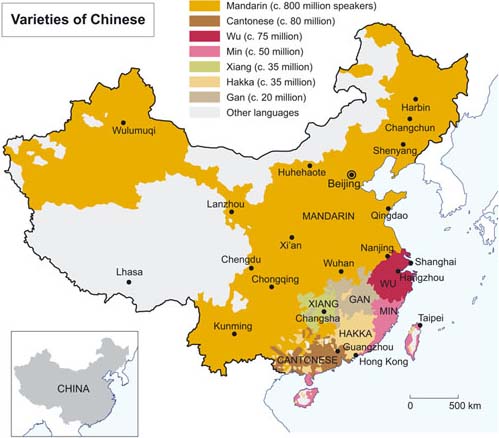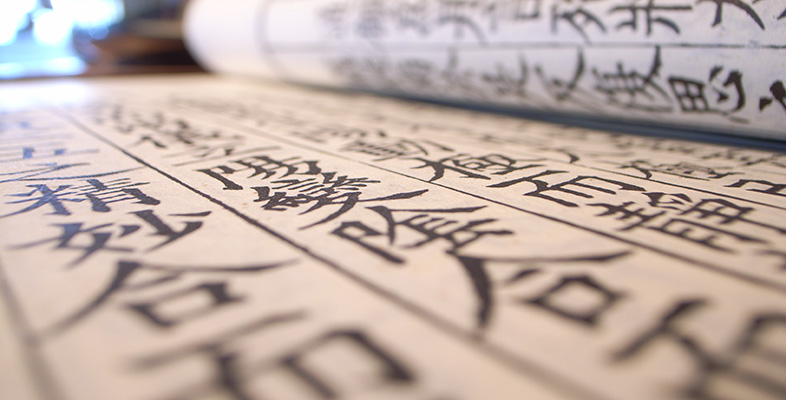1.1 Varieties of Chinese
Apart from Mandarin, the other six major varieties of spoken Chinese are Cantonese, Gan, Hakka, Min, Wu and Xiang. The map below shows the areas of China in which they are spoken and by approximately how many people, as well as the parts of China where non-Chinese languages are predominantly spoken.

There is some debate among linguists about whether the different varieties of Chinese should be regarded as dialects or as languages in their own right. Interpretations depend on how ‘language’ and ‘dialect’ are defined. Furthermore, each dialect group consists of many sub-dialects, several of which are spoken widely enough to be categorised by some linguists as major dialects (or languages) that could justifiably be added to the list above.
The samples presented here teach Mandarin Chinese in its standardised modern form. Standard Mandarin Chinese is commonly referred to as 普通话 pŭtōng huà (common speech) in the People’s Republic of China, 国语 guó yŭ (national language) in Taiwan and 华语 huá yŭ (Chinese language) in Singapore. In this course, Mandarin Chinese will simply be referred to as ‘Chinese’.
Chinese is often perceived in the West as a difficult language, mainly because of its different character script and the fact that it is a tonal language – i.e. it uses tones to distinguish meanings. Chinese grammar, on the other hand, is quite simple compared to that of many European languages. There is no conjugation, number agreement or case change, so you only ever have to learn a word in one form.
To start, test your knowledge of the Chinese language with a quiz in Activity 1. You will then move on to learn about it in more depth by exploring pinyin, tones and word formation.
Activity 1 Chinese language general knowledge quiz
a.
True
b.
False
The correct answer is a.
Discussion
True. Mandarin Chinese is the official language of China, Taiwan, one of the official languages in Singapore and one of the six official languages in the United Nations.
a.
True
b.
False
The correct answer is b.
Discussion
False. The Han Chinese constitute about 94 percent of China’s population. About 70 percent of the Han people speak Mandarin Chinese; the remaining 30 percent speak other related Chinese languages or dialects.
a.
True
b.
False
The correct answer is b.
Discussion
False. Apart from Mandarin, the other six major varieties of spoken Chinese are Cantonese, Gan, Hakka, Min, Wu and Xiang.
a.
True
b.
False
The correct answer is a.
Discussion
True. Chinese is often perceived in the West as a difficult language, mainly because of its different character script and the fact that it is a tonal language.
